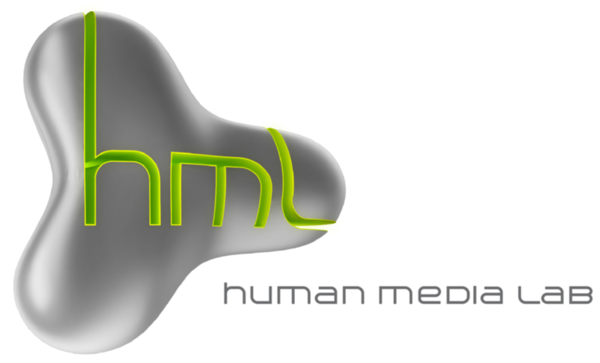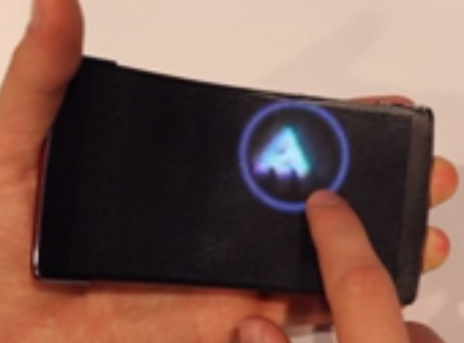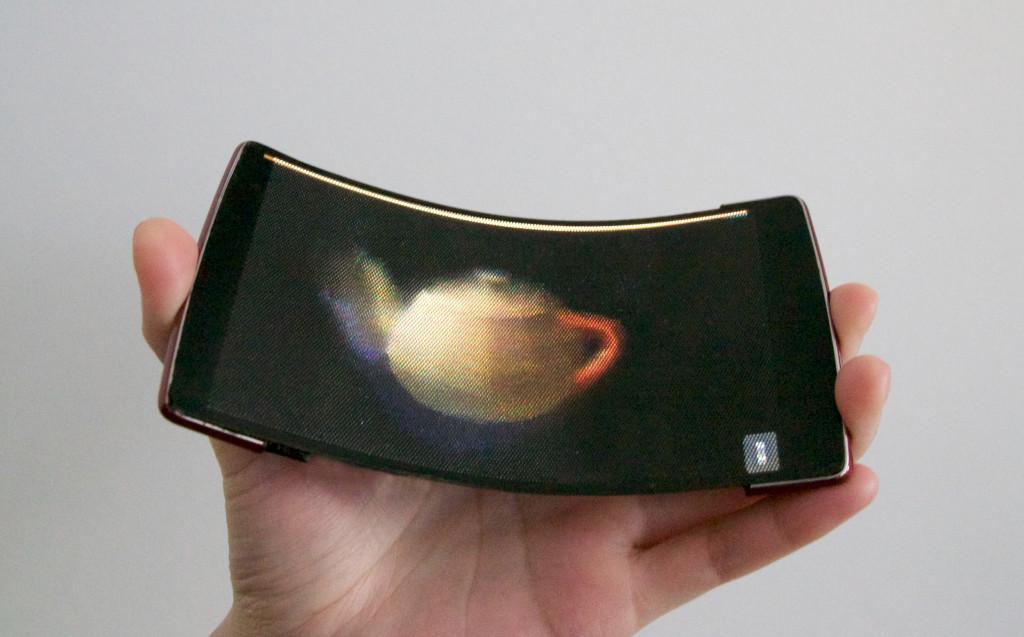HoloFlex: Canadian Researchers Invent Bendable Phone That Displays 3D Images as Conferencing, Gaming & Design Tool
 I was always a fan of photography, but decades past receiving a 35mm camera as I turned fourteen, I now have a child that very age myself. As I’m busy commemorating every moment with an iPhone photo, this suddenly camera shy teenager recently asked me in a rather irritated moment if it wouldn’t be better just to live the moment rather than taking a picture of it. Although that certainly won’t fly with most moms, it does bring up the issue of why photographs—and the act of taking them—is so important to us. For most, photography is a way of preserving a memory, but in taking that picture we also experience the magic of creating—and keeping—an image. This allows us to step into another reality as we are clicking away, as well as the option of returning to it whenever we choose.
I was always a fan of photography, but decades past receiving a 35mm camera as I turned fourteen, I now have a child that very age myself. As I’m busy commemorating every moment with an iPhone photo, this suddenly camera shy teenager recently asked me in a rather irritated moment if it wouldn’t be better just to live the moment rather than taking a picture of it. Although that certainly won’t fly with most moms, it does bring up the issue of why photographs—and the act of taking them—is so important to us. For most, photography is a way of preserving a memory, but in taking that picture we also experience the magic of creating—and keeping—an image. This allows us to step into another reality as we are clicking away, as well as the option of returning to it whenever we choose.
Today we are all aware of how far photography has changed, and some may even say it has devolved, rendering traditional cameras obsolete and sending them almost sadly to line the shelves of secondhand stores, as they become memories in themselves. As the world of 3D becomes of more and more interest—and as multitudinous innovations allow us to go there more easily—indeed we do see a new evolution in the making and viewing of images, and even on the smartphone. Much of this becomes integrated into 3D printing today as well, both as technology and as the end result for the user.
 Many of us though are probably curious as to why technology has taken us so far, yet holography has seemed to take forever in getting off the ground for more everyday use. The truth is, it’s there as part of daily life, although you may not think about it—like that hologram on your new credit card with the chip, as just one small example. What we’ve all been looking forward to though, in true trekkie fashion, is the use of holography in personal images, and the ability to see things as if they were floating in the air before us. And now, researchers at Queen’s University in Ontario have been able to actually translate this into the world of the smartphone, surely giving all the big manufacturers pause.
Many of us though are probably curious as to why technology has taken us so far, yet holography has seemed to take forever in getting off the ground for more everyday use. The truth is, it’s there as part of daily life, although you may not think about it—like that hologram on your new credit card with the chip, as just one small example. What we’ve all been looking forward to though, in true trekkie fashion, is the use of holography in personal images, and the ability to see things as if they were floating in the air before us. And now, researchers at Queen’s University in Ontario have been able to actually translate this into the world of the smartphone, surely giving all the big manufacturers pause.
With a Flexible Organic Light Emitting Diode (FOLED) screen, the Canadian researchers have been able to create holograph technology for the Android plaform. The HoloFlex smartphone accommodates viewing by multiple users at once, without any bulky accompanying headgear or kooky 3D glasses. This is accomplished with both stereoscopy and motion parallax, a cue regarding depth that actually occurs from our own movements.
“HoloFlex offers a completely new way of interacting with your smartphone. It allows for glasses-free interactions with 3D video and images in a way that does not encumber the user,” says Dr. Roel Vertegaal, director of the Human Media Lab and leader of the research team.
According to these researchers at the The Human Media Lab (HML) at Queen’s University, this holography comes to fruition on a 1920×1080 screen, with images being seen via 12-pixel wide circular blocks. These blocks allow for a complete 3D view, projecting through a flexible microlens array that is 3D printed and holds over 16,000 fisheye lenses.
You are able to check out a 3D object just by rotating the phone and viewing the light-filled display. And an added effect that probably will surprise many is the bend sensor which allows the user to move displayed 3D objects by bending the phone. Aside from being a fun novelty that will allow us to feel technologically superior to everyone else, why do we need this? It should be a great communication and recreational tool, obviously, but it will also come in very handy for users who are involved in editing 3D images for 3D printing. As the touchscreen allows the users to squeeze the display and move and change images, the world of 3D editing definitely takes a new turn. The HoloFlex lets the user examine their model from a wide view angle, seeing several different perspectives all at once.
“By employing a depth camera, users can also perform holographic video conferences with one another,” says Dr. Vertegaal. “When bending the display users literally pop out of the screen and can even look around each other, with their faces rendered correctly from any angle to any onlooker.”
Gamers too should be quite excited about this, and if you have an avid player in your life, kiss goodbye to yet more of that quality time with them as they are sure to become sidelined even with this smaller screen, as elements of the game spring from the phone in 3D holographic display. Check out the video below to see an example with Angry Birds:
The phone is powered by a 1.5 GHz Qualcomm Snapdragon 810 processor and 2 GB of memory. The board runs Android 5.1 and includes an Adreno 430 GPU supporting OpenGL 3.1.
To be unveiled today, May 9th, at the Human-Computer Interaction conference in San Jose, the HoloFlex is sure to be an item of primary interest, with research supported by both Immersion Canada Inc. and the Natural Sciences and Engineering Research Council of Canada (NSERC).
The Human Media Lab (HML) at Queen’s University has been responsible for many other inventions, such as:
- Eye tracking sensors
- Eye tracking TVs and cellphones
- PaperPhone, the world’s first flexible phone
- PaperTab, the world’s first flexible iPad
- TeleHuman, the world’s first pseudo-holographic teleconferencing system
Dr. Vertegaal, Professor of HCI at Queen’s University’s School of Computing, is also director of the HML, where numerous students, both undergrad and graduate are involved. These students come from many different backgrounds, such as design, engineering, computer science, and even psychology. Is this a smartphone you’d like to have eventually? Discuss in the HoloFlex 3D Smartphone forum over at 3DPB.com.
[Images: Human Media Lab]Subscribe to Our Email Newsletter
Stay up-to-date on all the latest news from the 3D printing industry and receive information and offers from third party vendors.
Print Services
Upload your 3D Models and get them printed quickly and efficiently.
You May Also Like
The Market and Industry Potential of Multi-Material 3D and 4D Printing in Additive Electronics
Additive manufacturing leverages computer-based software to create components for products by depositing either dielectric or conductive materials, layer by layer, into different geometric shapes. Since its birth in the 1980s,...
3DPOD 262: Bio-inspired Design for AM with Dhruv Bhate, Arizona State University
Dhruv Bhate is an associate professor at Arizona State University. There, he looks at structures, materials, and design. Previously, he worked at PADT as well as in the semiconductor and...
3DPOD 261: Tooling and Cooling for AM with Jason Murphy, NXC MFG
Jason Murphy´s NXC MFG (Next Chapter Manufacturing) is not a generalist service; instead, the company specializes in making tooling. Using LPBF and binder jet, the company produces some of the...
3DPOD 260: John Hart on VulcanForms, MIT, Desktop Metal and More
John Hart is a Professor at MIT; he´s also the director of the Laboratory for Manufacturing and Productivity as well as the director of the Center for Advanced Production Technologies....

































